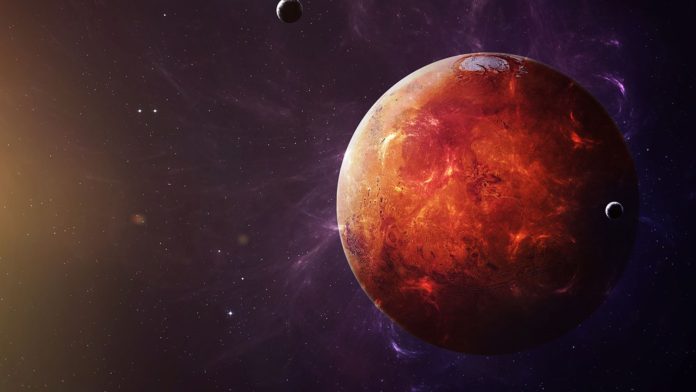For a long time, scientists have been under the impression that Mars’ crust is very dense. However, recent evidence retrieved by NASA scientists confirms the Red Planet is not quite as dense as they once thought. This is an exciting piece of information for the scientists to learn and may help to better understand the planet’s evolution and structure.
The fact that the planet has a lower density suggests that at least a portion of its crust is porous. Even so, it’s still too early to rule out the possibility of a thinner crust or a different mineral composition. Results from the research showed that the average density of Mars’ crust was around 2,568 kilograms per meter cubed (161 pounds per cubic foot), which is much lower than researchers had previously estimated.

The new value was extracted from the gravity field of the Red Planet, whereas previous estimates relied more upon the composition of rocks and soil on Mars. “As this story comes together, we’re coming to the conclusion that it’s not enough just to know the composition of the rocks,” said co-author on the paper and NASA’s Goddard Space Flight Center planetary geologist, Greg Neumann. “We also need to know how the rocks have been reworked over time.”
Sander Goossens of Goddard led the research and along with colleagues took an existing gravity model and came up with new ways of applying it under a different constraint to achieving a new solution. Rather than use the standard Kaula constraint approach, the team instead created their own constraint that took into consideration the planet’s topography. “With this approach, we were able to squeeze out more information about the gravity field from the existing data sets,” confirmed Terence Sabaka, Goddard geophysicist and second author on the paper.
To test their approach before taking it to Mars, the researchers first applied it to the gravity filed that was being used before the GRAIL mission. The GRAIL result and the estimate for the density of the moon’s crust were essentially the same at 2,550 kilograms per meter cubed (about 159 pounds per cubic foot). Using the new model the researchers were able to create global maps to show the density and thickness of the planet’s crust. Their findings will hopefully be confirmed in 2018 when NASA’s InSight mission is set to take place and measurements will be taken from the Red Planet.
More News to Read
- Researcher Discovered a New Way of Eco-Friendly Disposal for Data Security and Healthcare
- NASA’s Ocean Observation Reveals Sea-Level Fingerprints
- Chinese Scientists Create Device That Converts Blood Flow Energy into Electricity
- Researchers Revealed a New Clinically Tested Drugs that Inhibits the Growth of Tumours
- What Do You Think About Clothes that Grow With Your Child?

